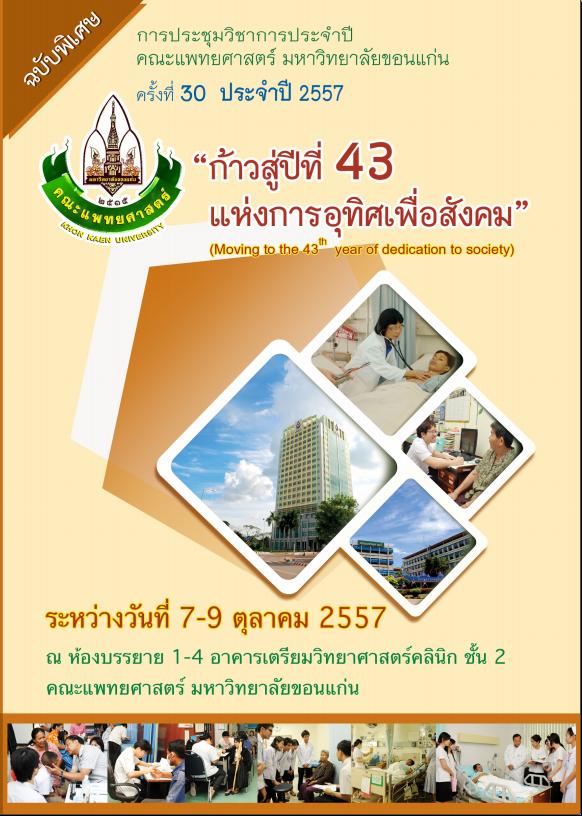Difference of Hearing Threshold Measured by Hearing TestTM Application on Smartphone in Comparison to Conventional Audiometer
Keywords:
Audiometer, Hearing TestTM application, Conventional AudiometerAbstract
Background and Objective: Nowadays, several self-audiometry applications which are convenient and free of cost have been developed on smartphone. But, there haven’t been any studies comparing the efficiency of certain audiometry application in different types of AndroidTM smartphones. The objective of the study was to calculate the central tendency of the difference of hearing threshold obtained from conventional audiometry in comparison to Hearing TestTM application in different types of AndroidTM smartphones in different room conditions.
Methods: This was a comparative study. Setting: Sound booth, Quiet room, Noisy room at Faculty of Medicine, Khon Kaen University. Population and Samples: Six 5th year Medical students studying Community Medicine IV at Faculty of Medicine, Khon Kaen University (research team) representing 48 samples. Calculated sample size was 40. Tools: Hearing TestTM v.1.0.7, Samsung Galaxy Note 3®, LGG2® , i-mobile IQ 5.1 Pro®. Measurement: Analysed by using SPSS® v.17.0 with comparative statistics composing of Wilcoxon signed rank test and descriptive statistics composing of Median and Interquartile range.
Results : i-mobile® smartphone has the smallest number of median and interquartile range of difference in comparison to the two other devices in all frequencies in both sound booth and quiet room which are 0.0,[-10.0,0.0] and 0.0,[-5.0,5.0] respectively. In noisy room, LG® and i-mobile® smartphone have the smallest number of median and interquartile range of difference which are -5.0,[-5.0,0.0] and 5.0,[5.0,10.0] respectively.
Conclusion: The result from i-mobile® smartphone was the most proximate to the result from the conventional audiometer in all room condition.




